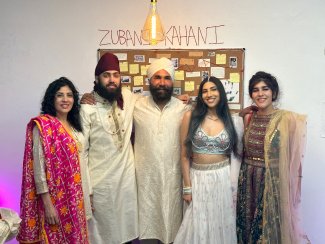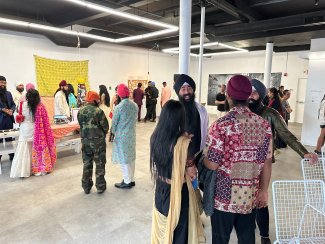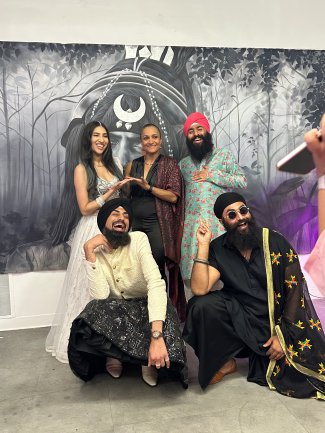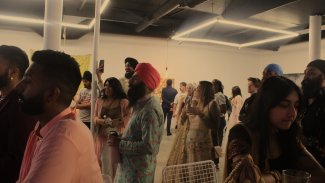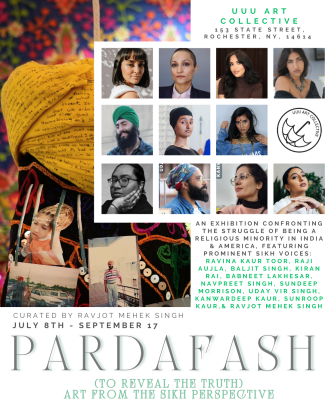"The older Sikh generation is particularly exceptional at one thing - hiding their traumas. It is a product of evolution - it is survival. If they were to remember every detail, every minute of their struggles, they would not be able to function and continue life. But perhaps it is not their duty to be both survivors of the intense attacks against Sikhs in the 80s. Perhaps it is the duty of the next generation, their children and grandchildren, to hear their stories, to feel that pain, and to use the privileges of being safe, educated, and abroad to take up their fight for justice.
Inspired by the stories of my mother, a Sikh woman from Delhi who survived the 1984 Sikh Genocide, and her family, I set out on a journey to speak out about her experience while maintaining my own safety via the subjective nature of fine art. In the spirit of an era of great social justice, global unity, and liberation, myself and 10 prominent Sikh artists of varying backgrounds set out to amplify the stories of the 1984 Sikh Genocide via an art exhibit in New York titled Pardafash (To Reveal the Truth) and educate people outside of the Sikh sphere on what really happened and the parallels of what continues to happen to us today.
What is it like to be a minority within a minority? What does it mean to be an outsider no matter where in the world you go? What is it like to constantly be monitored, censored, and silenced? Sikhs across the globe feel this isolation, this negligence, this subtle oppression on a daily basis including in our own home country of India. As the world progresses, one would hope that attacks against religious minorities would lessen or cease altogether, yet it pains me to see Sikhs and others continuing to face injustice not only in India, but recently even abroad in Canada and the UK for example. In light of how Sikhs have been targeted for speaking out about historical and ongoing injustices, art became one of the only ways we could speak without having to say a word of our own.
The Pardafash exhibit is the first of its kind, tackling the difficulty of being a Sikh in post 9/11 America and Canada while likening the current struggles to those faced by Sikhs in India in the 80s. History was made the night the show opened. Never before has a Queer Sikh woman curated and led a long running contemporary art exhibit about 1984.
On the opening night of July 7th, Rochester, New York lit up with not only Sikh faces but people of all races, religions, ages, sexual orientations, and political alignments. They all came together to educate themselves on Sikh struggle as depicted by incredible contemporary art. Through a range of mediums including fabric sculpture, video installation, fashion design, AR, film, painting, and animation, 11 Sikh artists revealed the hidden stories of their people and the trauma of recent historical tragedies - some of which are too difficult to speak about publicly out of fear of being targeted by the Indian government even today.
Pardafash is an exploration of our small but mighty plea to be heard, to have our history written into mainstream textbooks in all nations, to erase propaganda that is convenient to use when Sikhs are advocating for their rights, to be able to live in our homeland in peace without fear. It is our way of reaching new people who have never even heard about Sikhi and thus haven’t heard of the injustices we have had to face. It is our way of taking up the mantle and letting our elders rest as we use our newfound privileges to continue creating space for ourselves and our truths. Under the cover of art, Kiran Rai, Baljit Singh, Ravina Toor, Sundeep Morrison, Babneet Lakhesar, Raji Aujla, Navpreet Singh, Kanwardeep Kaur, Uday Vir Singh, Sunroop Kaur, and I are able to fearlessly speak our truth out loud.
Pardafash is on display from July 8th - September 17th at the UUU Art Collective in Rochester, NY.

